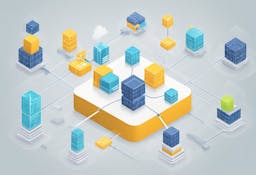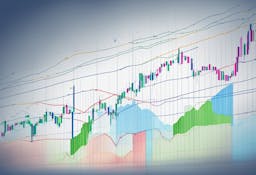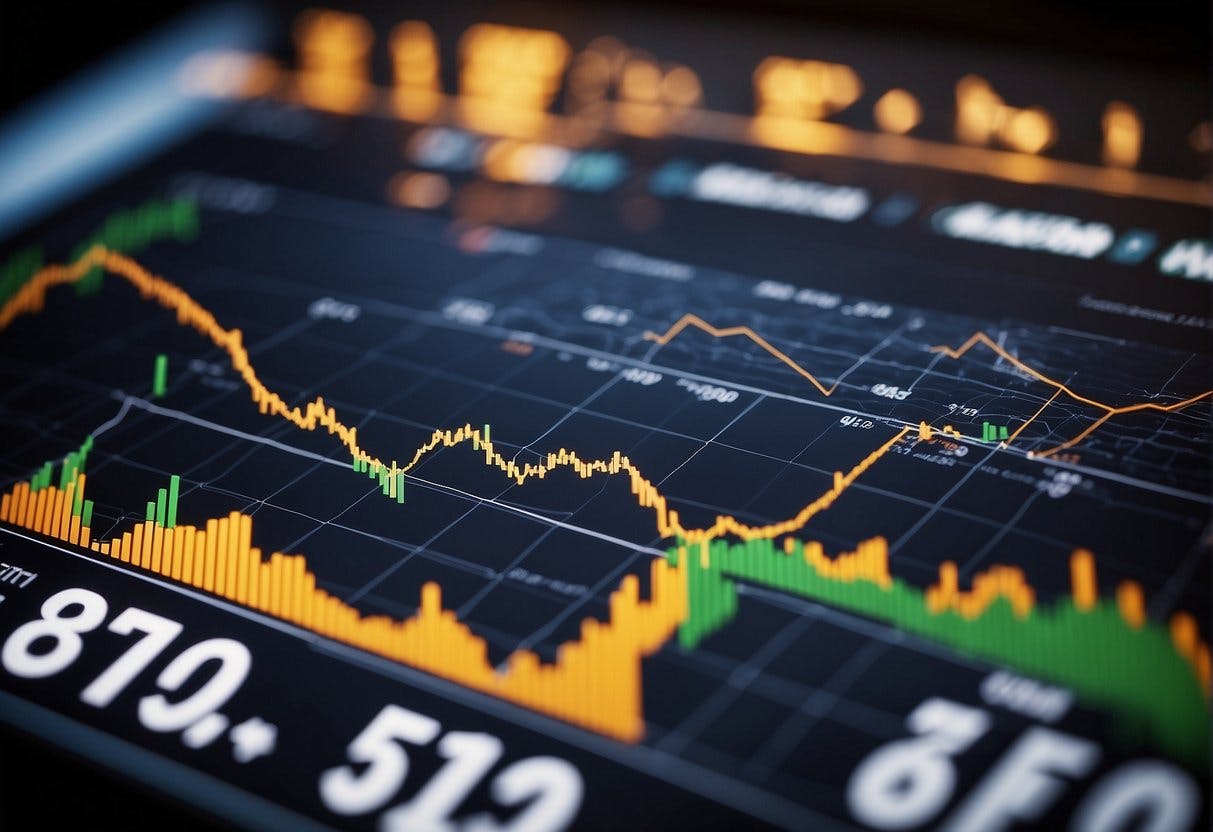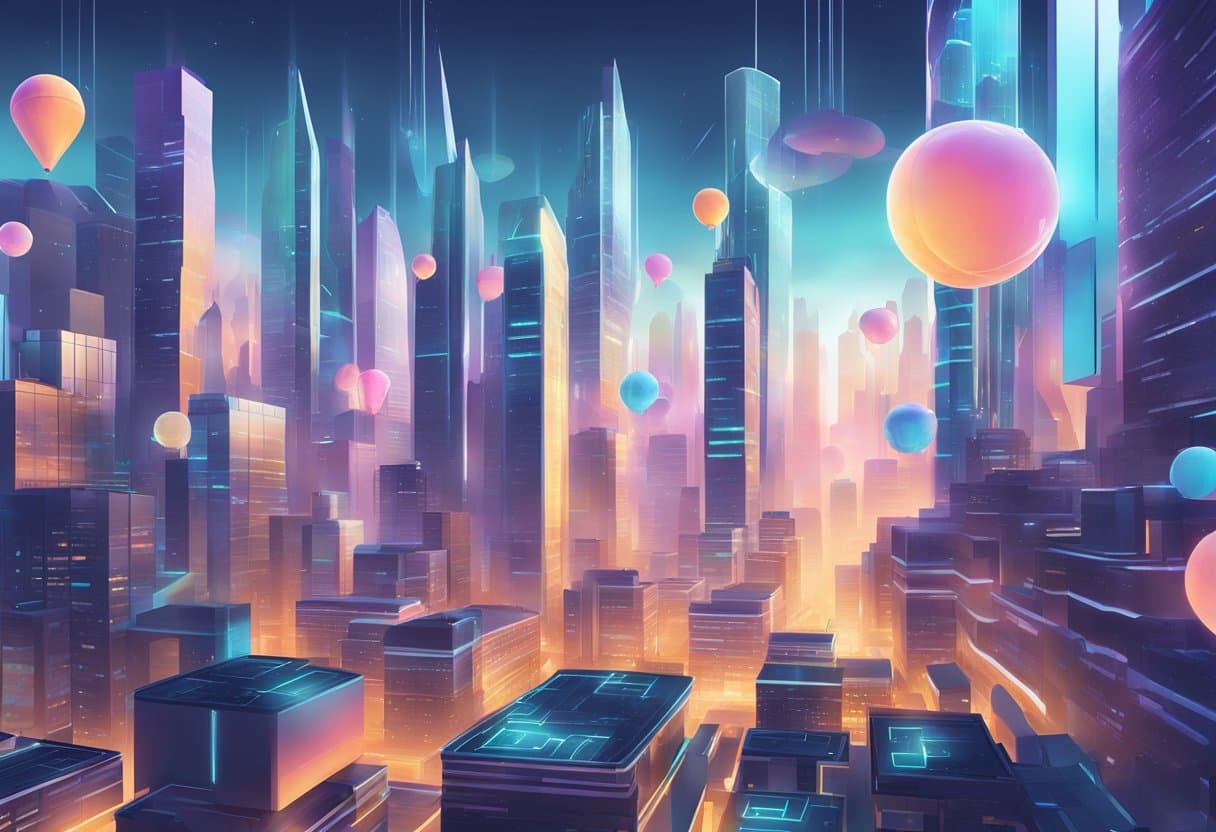
Non-Fungible Tokens (NFTs) have taken the world by storm, revolutionizing digital ownership and interaction. NFTs are unique digital assets stored on the blockchain that serve as proof of ownership or authenticity for a digital or physical item/right. Unlike fungible assets, NFTs are one-of-a-kind and cannot be replaced. They use blockchain technology to provide decentralized, secure, and transparent records.

Understanding NFTs and blockchain technology is crucial to understanding the role of NFTs in digital art and collectibles, NFT market dynamics and economics, legal and ethical considerations of NFTs, and the future of NFTs in various industries. The NFT market has seen a decline in transaction volumes since its peak in early 2022, but various industries still see value in these technology applications. Financial services, consumer packaged goods, gaming, and art are already deploying NFT use.
The future of NFTs in digital ownership is promising, with the potential to transform traditional ownership models in various industries. The use of blockchain technology and NFTs will lead to greater transparency, security, and decentralization, providing new opportunities for creators and consumers alike.
Understanding NFTs and Blockchain Technology
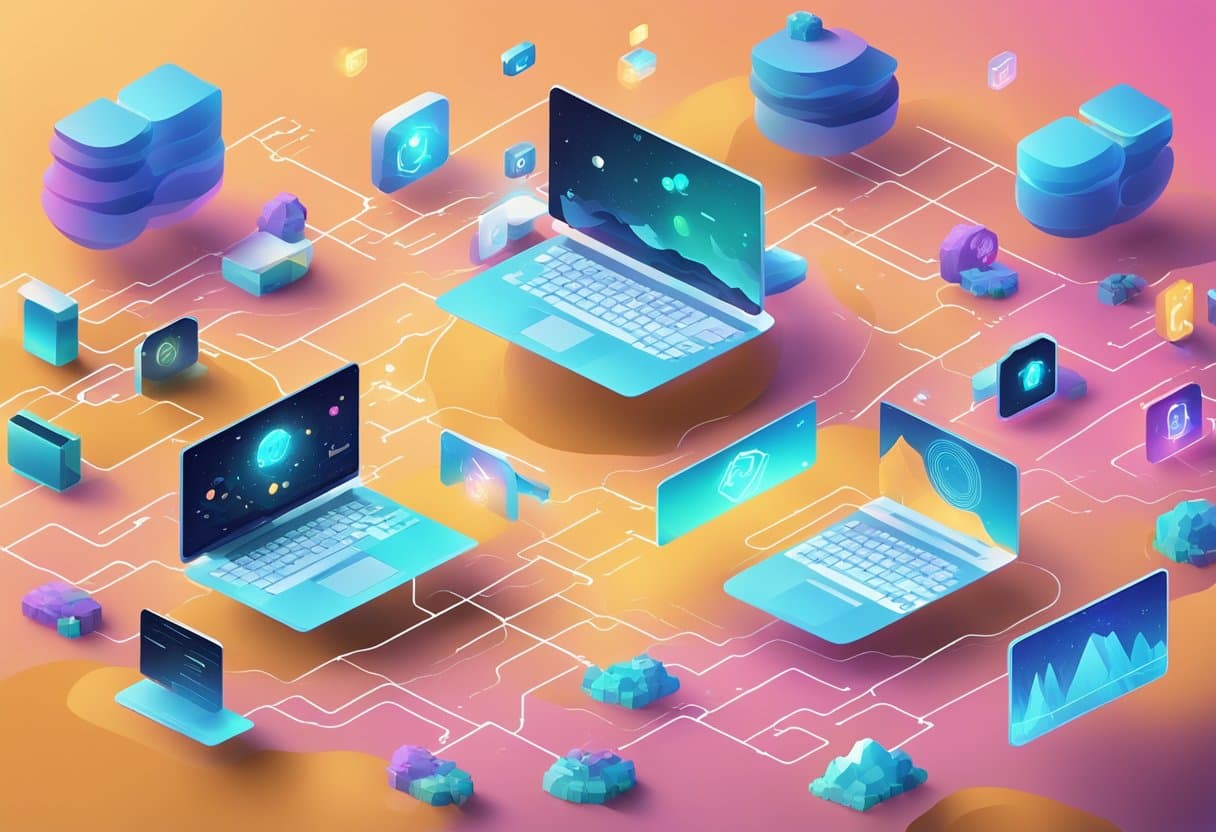
Defining Non-Fungible Tokens
Non-fungible tokens (NFTs) are unique digital assets that exist on a blockchain and cannot be replicated. Unlike fungible assets such as Bitcoin, which are interchangeable, each NFT represents a one-of-a-kind item, such as digital art, music, or collectibles. NFTs are stored on a blockchain, which is a decentralized digital ledger that records transactions in a secure and transparent manner.
How Blockchain Enables NFT Existence
Blockchain technology enables the existence of NFTs by providing a secure and transparent way to record ownership and transfer of digital assets. NFTs are created using smart contracts, which are self-executing contracts with the terms of the agreement between buyer and seller being directly written into code. This ensures that NFT ownership is transparent and immutable, meaning that once an NFT is created, it cannot be duplicated or destroyed.
Ethereum is the most popular blockchain platform for creating NFTs due to its ability to support smart contracts and its open-source nature. However, other blockchain platforms such as Binance Smart Chain, Flow, and Tezos are also gaining popularity for NFT creation.
In conclusion, NFTs are a unique and innovative use case for blockchain technology that allow for the creation and ownership of one-of-a-kind digital assets. The use of smart contracts and blockchain technology ensures that NFT ownership is transparent and immutable, providing a new level of authenticity and security in the digital ownership space.
The Role of NFTs in Digital Art and Collectibles
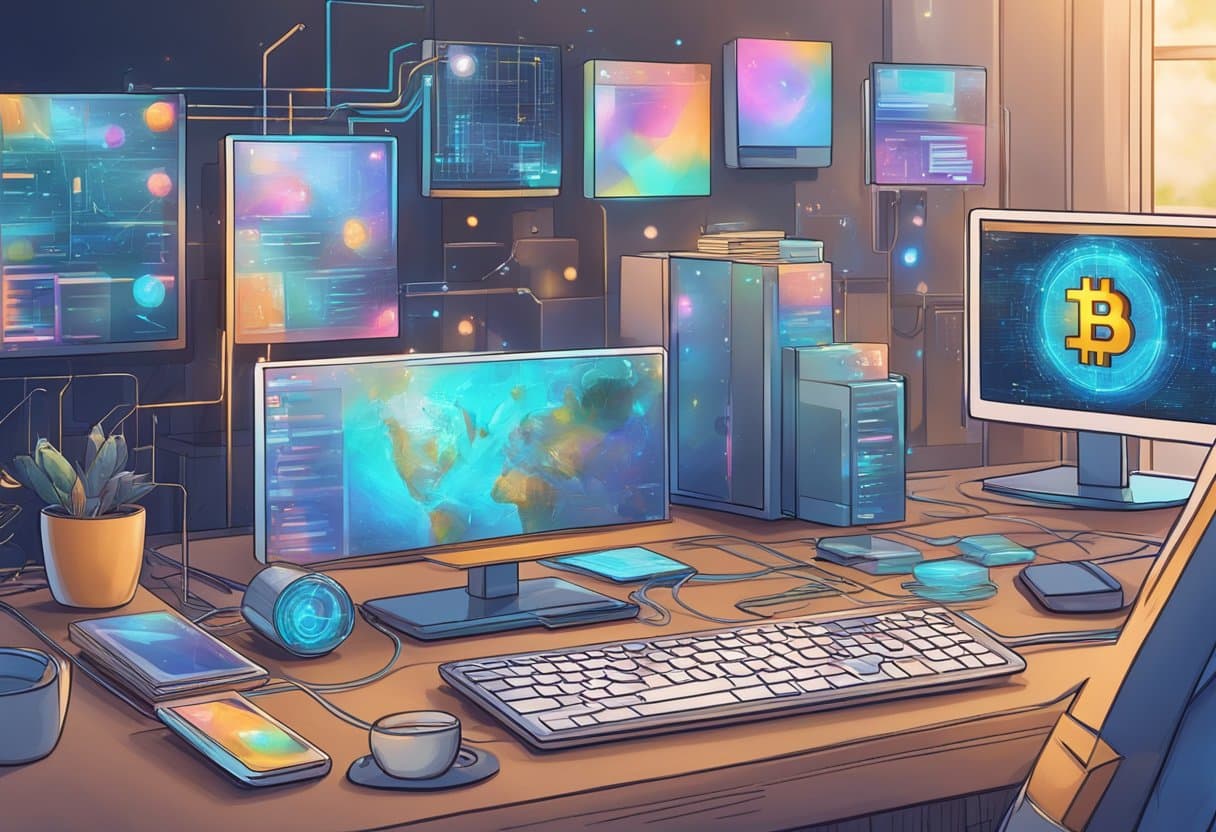
Non-fungible tokens (NFTs) have taken the art world and collectibles market by storm, revolutionizing the way digital assets are bought, sold, and owned. NFTs are unique digital assets that are stored on the blockchain, which serves as proof of ownership and authenticity for a digital or physical item.
NFTs in the Art World
NFTs have brought a new dimension to the art world, allowing artists to monetize their digital creations by selling them as unique, one-of-a-kind assets. This has created a new market for digital art, which was previously difficult to monetize due to the ease of replication. With NFTs, artists can now sell their digital art as unique assets, with ownership rights tied to the blockchain.
According to TIME, “NFTs—digital tokens tied to assets that can be bought, sold and traded—are enabling artists to profit from their work more easily than ever.” The NFT art market has seen some incredible sales, such as Beeple’s “Everydays: The First 5000 Days” which sold for a record-breaking $69 million at Christie’s auction house.
Collectibles and Their Unique Value
NFTs have also created a new market for collectibles, where unique digital assets can be bought and sold as one-of-a-kind items. This has created a new level of value for digital collectibles, as ownership rights are tied to the blockchain, ensuring authenticity and uniqueness.
As YourStory notes, “In a digital era where replication is often a click away, the concept of ownership is undergoing a dramatic shift, thanks to the recent entry of Non-Fungible Tokens (NFTs) into the world stage.” The value of NFT collectibles is determined by a number of factors, including rarity, historical significance, and cultural relevance.
CryptoPunks are a prime example of NFT collectibles that have gained significant value in the market. These 8-bit pixel art characters were created in 2017 and sold for just a few dollars each. However, their unique value and rarity have since driven up their price, with some selling for millions of dollars.
In conclusion, NFTs have opened up new opportunities for digital ownership, particularly in the art world and collectibles market. The unique value and ownership rights tied to the blockchain have created a new level of authenticity and scarcity, driving up the value of digital assets.
NFT Market Dynamics and Economics
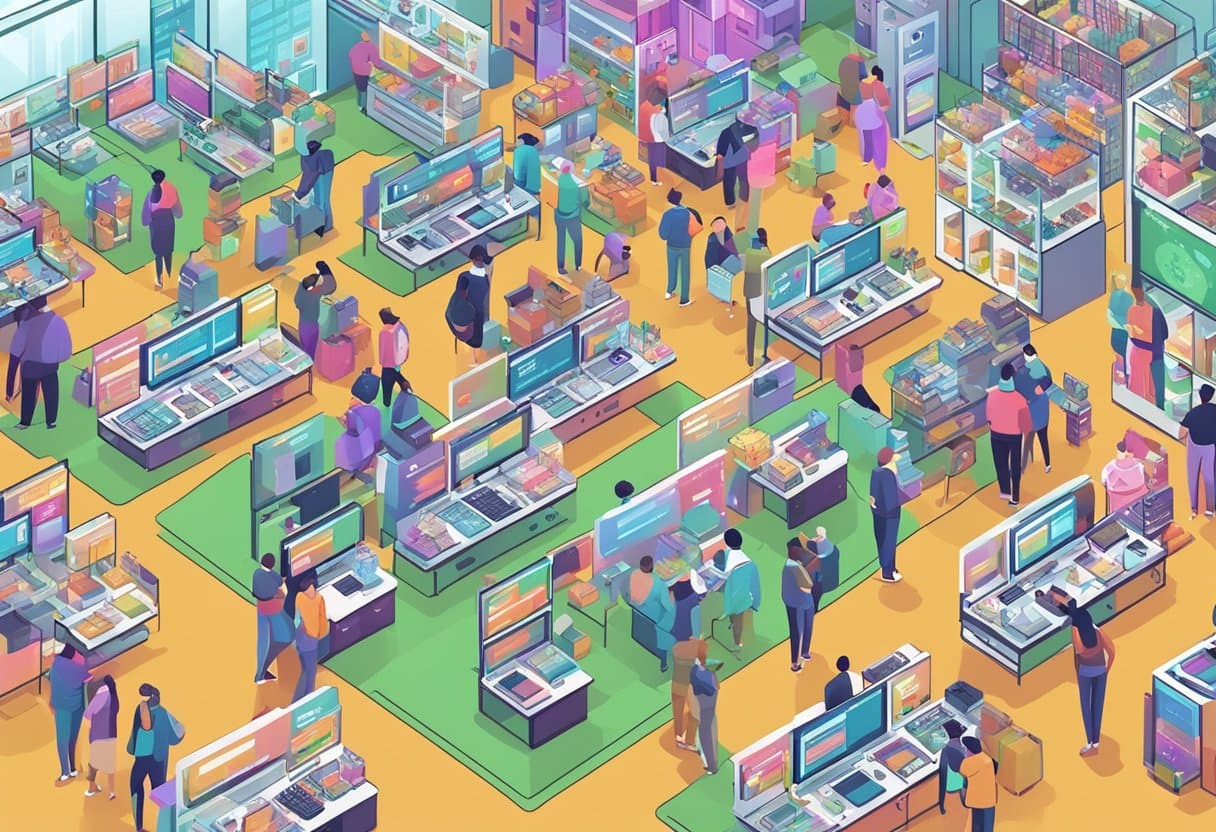
Non-Fungible Tokens (NFTs) have emerged as a new asset class in the digital world, with a growing market and increasing adoption in various industries. Understanding the market dynamics and economics of NFTs is crucial for investors and creators alike. This section will cover two important aspects of NFT market dynamics and economics: Understanding Supply and Demand and Pricing and Value Determination.
Understanding Supply and Demand
The NFT market is driven by the basic principles of supply and demand. The supply of NFTs is limited by the nature of the blockchain technology that underpins them. Each NFT is unique and has a unique identifier that makes it scarce. The scarcity of NFTs contributes to their value and makes them desirable to collectors and investors.
On the other hand, the demand for NFTs is driven by a variety of factors. Some of the factors that influence demand include the popularity of the creator or artist, the uniqueness of the NFT, and the perceived value of the underlying asset. The demand for NFTs can also be influenced by market trends, such as the growing interest in digital art and collectibles.
Pricing and Value Determination
Determining the price and value of an NFT can be challenging, as it is a relatively new asset class with limited historical data. However, there are several factors that can influence the pricing and value determination of NFTs.
One of the key factors is the underlying asset that the NFT represents. The value of the underlying asset can influence the value of the NFT, as the NFT represents ownership of that asset. For example, an NFT that represents ownership of a rare piece of artwork may be more valuable than an NFT that represents ownership of a less valuable piece of artwork.
Another factor that can influence pricing and value determination is the perceived uniqueness of the NFT. The more unique and rare an NFT is, the higher its perceived value may be. Additionally, the popularity of the creator or artist can also influence the value of the NFT.
In conclusion, the NFT market is driven by the principles of supply and demand, and the pricing and value determination of NFTs can be influenced by a variety of factors, including the underlying asset, the perceived uniqueness of the NFT, and the popularity of the creator or artist. As the NFT market continues to evolve, it will be interesting to see how these dynamics and economics continue to play out.
Legal and Ethical Considerations of NFTs
Non-fungible tokens (NFTs) have raised several legal and ethical considerations in the area of digital ownership. This section explores some of the key issues related to copyright, ownership, authenticity, provenance, and royalties that arise with the use of NFTs.
Copyright and Ownership Issues
One of the primary concerns with NFTs is the issue of copyright and ownership. NFTs are unique digital assets that are stored on the blockchain, and they serve as proof of ownership or authenticity for a digital or physical item or right. However, the ownership of the underlying intellectual property rights, such as copyright, trademark, and patent, is not automatically transferred with the sale of an NFT. Therefore, it is crucial to ensure that the seller has the necessary rights to sell the NFT and that the buyer obtains the appropriate rights to use the underlying intellectual property.
Authenticity and Provenance
Another critical issue with NFTs is authenticity and provenance. NFTs use blockchain technology to provide decentralized, secure, and transparent records of ownership and transactions. However, the authenticity and provenance of the underlying asset can be challenging to establish, especially for digital assets that can be easily replicated. Therefore, it is essential to verify the authenticity and provenance of the underlying asset before creating an NFT.
To address these issues, some platforms, such as OpenSea and Rarible, have implemented features that allow creators to verify their ownership and authenticity of the underlying asset. Additionally, some NFT marketplaces have partnered with third-party verification services to authenticate the provenance of the underlying asset.
In conclusion, the legal and ethical considerations of NFTs are complex and multifaceted. It is essential to address these issues to ensure that the use of NFTs is fair, transparent, and legally compliant. By addressing issues related to copyright, ownership, authenticity, provenance, and royalties, NFTs can provide a secure and transparent way for creators to monetize their digital assets while protecting their intellectual property rights.
The Future of NFTs in Various Industries
Non-fungible tokens (NFTs) have been making waves in the digital ownership space, and their impact is not limited to the art world. In fact, NFTs have the potential to revolutionize various industries, including gaming, virtual realities, music, and entertainment.
NFTs in Gaming and Virtual Realities
NFTs have already started to make their way into the gaming industry. With NFTs, gamers can own unique in-game items and experiences that are not interchangeable with other players. This unique ownership can increase the value of the game and create new revenue streams for game developers.
NFTs can also be used in virtual realities to create unique experiences for users. For example, users can own virtual real estate and build their own virtual worlds. NFTs can also be used to create unique avatars and in-game items that can be traded and sold within the virtual reality ecosystem.
NFTs Impact on Music and Entertainment
NFTs have the potential to revolutionize the music industry by allowing artists to sell their music and merchandise directly to their fans. With NFTs, artists can create unique experiences for their fans, such as exclusive backstage passes or meet-and-greets. This can create a new revenue stream for artists and help them connect with their fans on a deeper level.
NFTs can also be used in the entertainment industry to create unique experiences for fans. For example, movie studios can sell NFTs that give fans access to exclusive behind-the-scenes content or early screenings of upcoming movies. This can create excitement and anticipation for upcoming releases and increase engagement with fans.
Overall, NFTs have the potential to revolutionize various industries and create new revenue streams for businesses and creators. As the technology continues to evolve, it will be interesting to see how NFTs are used in different industries and how they will impact the digital ownership space.
Frequently Asked Questions
How are NFTs transforming the concept of digital ownership?
NFTs are transforming the concept of digital ownership by providing a unique and secure way to prove ownership of digital assets. With NFTs, individuals can prove ownership of digital assets such as artwork, music, and videos. This is a significant improvement over traditional digital ownership, where it can be difficult to prove ownership or authenticity.
What potential does blockchain technology hold for the evolution of NFTs?
Blockchain technology holds enormous potential for the evolution of NFTs. It provides a decentralized and secure way to store information, which is important for proving ownership and authenticity. Blockchain technology also allows for the creation of smart contracts, which can automate transactions and provide additional security.
How might NFTs impact intellectual property rights in the digital age?
NFTs could have a significant impact on intellectual property rights in the digital age. They provide a way for creators to prove ownership and authenticity of their digital assets, which is important for protecting their intellectual property rights. NFTs could also provide a new revenue stream for creators, as they can sell their digital assets as unique and valuable items.
What role could NFTs play in the future of creative industries?
NFTs could play a significant role in the future of creative industries. They provide a way for creators to monetize their digital assets, which could be a game-changer for artists, musicians, and other creatives. NFTs could also provide a new way for fans to support their favorite creators and engage with their work.
How could the regulatory landscape shape the NFT market going forward?
The regulatory landscape could have a significant impact on the NFT market going forward. As NFTs become more popular and valuable, regulators may start to take a closer look at them. This could lead to new regulations and guidelines for the use and sale of NFTs.
What are the emerging trends in the utilization of NFTs across various sectors?
NFTs are being utilized in various sectors, including art, music, sports, and gaming. In the art world, NFTs are being used to sell digital artwork for millions of dollars. In the music industry, NFTs are being used to monetize music and provide exclusive access to fans. In the sports world, NFTs are being used to sell collectibles and memorabilia. In the gaming industry, NFTs are being used to create unique in-game items that can be bought and sold.
Read More
